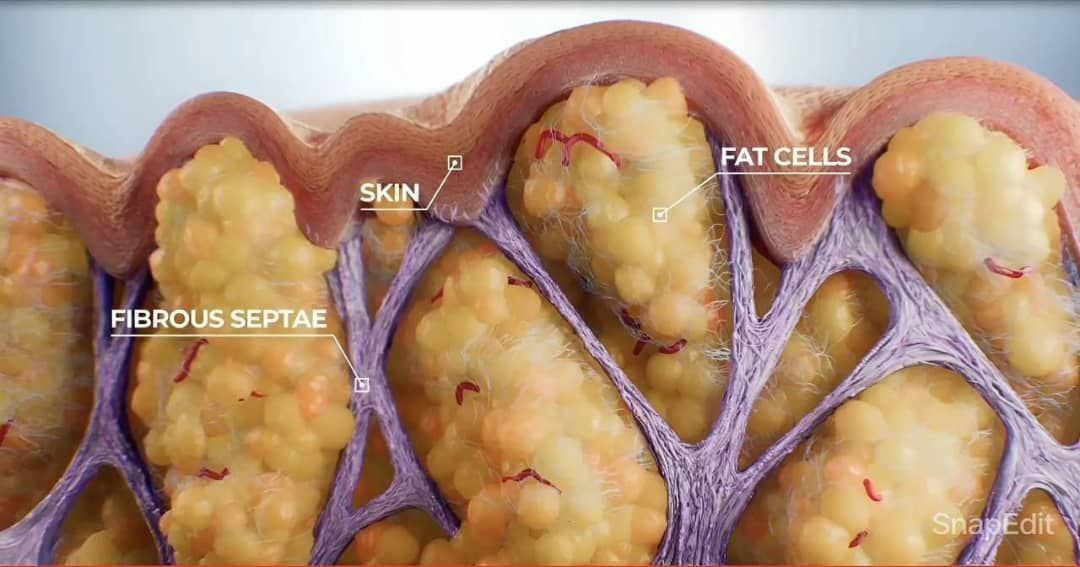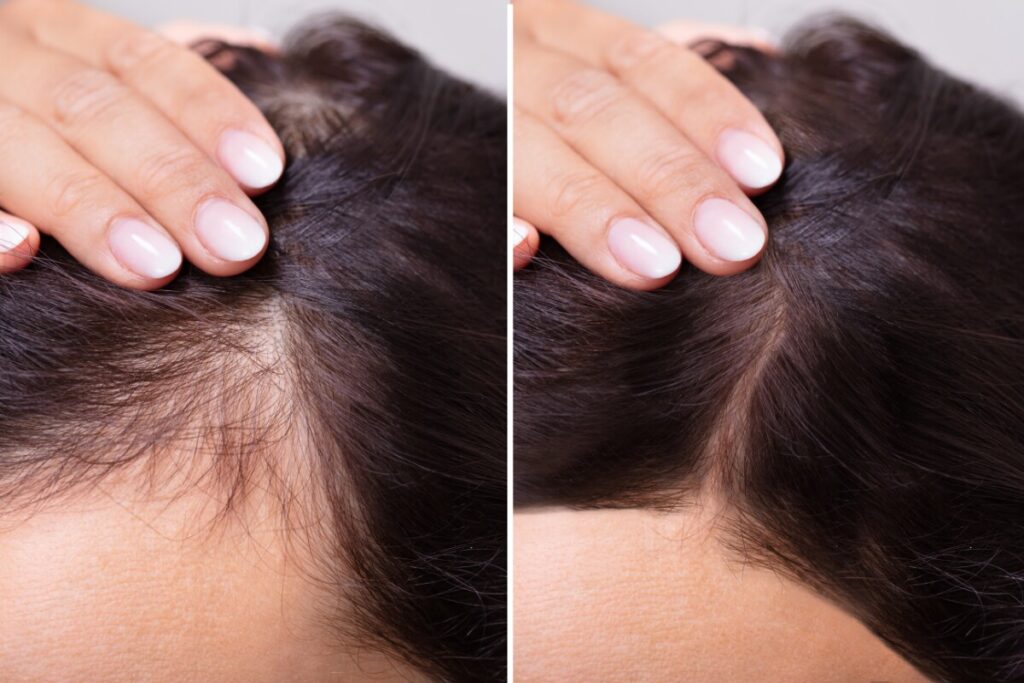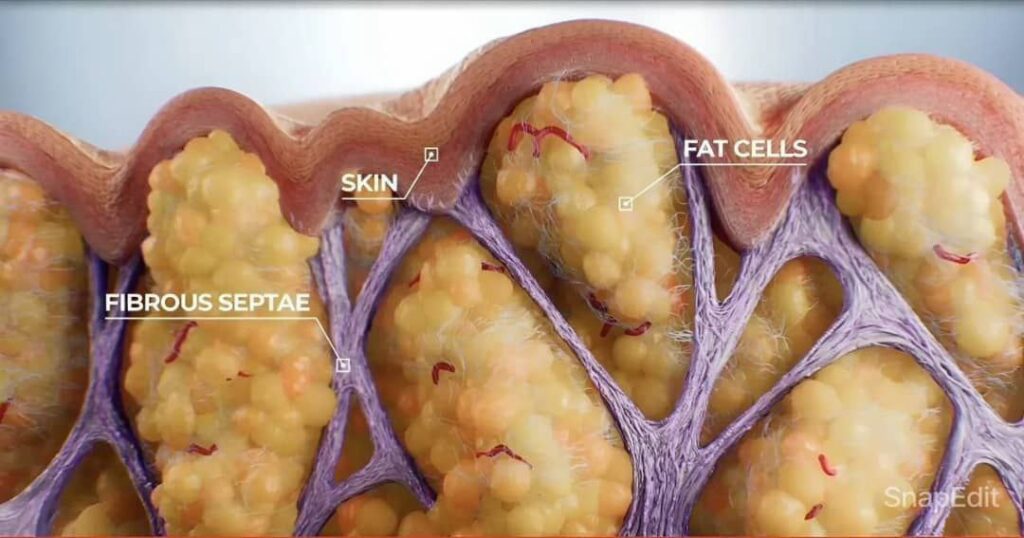Cellulite is a change in the appearance of the skin, which is mainly observed in women after puberty. Cellulite is characterized by the appearance of an orange peel or the presence of low and high spots on the skin, and for this reason, it is sometimes called orange peel.
About 1.5 billion women from all over the world with different races suffer from having cellulite, which can be mentioned as a reduction in the quality of life and dissatisfaction with the body.
Cellulite is rarely seen in men, and most men who see a doctor with cellulite have androgen deficiency, conditions that cause androgen deficiency, such as Klinefelter syndrome, hypogonadism, post-castration conditions, and prostate cancer patients. have undergone estrogen therapy. It is interesting to note that as the androgen deficiency worsens in these men, cellulite also worsens.
Despite the high prevalence of cellulite, little scientific research has been done on the cause of cellulite. The lack of scientific research on its physiology has made the ability to fix and treat orange peel extremely complicated.
There is a possibility of orange skin appearing in any part of the body that has subcutaneous fat tissue (such as hips and thighs), this condition can also be seen on the breasts, lower abdomen, upper arms and back of the neck.
Although cellulite is observed in any area where excess fat tissue is deposited, it does not mean that obese people necessarily have orange skin, however, weight gain aggravates cellulite or orange skin.
What is the cause of cellulite formation?
Although the exact cause of cellulite has not yet been determined, various theories have been proposed about its cause, which we will discuss below.
In this disease, changes in the connective tissue and subcutaneous fat are observed in the affected areas, that is, the subcutaneous fat has progressed into the dermis.
Advancement of subcutaneous fat in ultrasound shows itself as hypoechoic areas. Cellulite worsens with weight gain and the relationship between BMI and cellulite severity suggests that when the volume of fat in a connective capsule increases, adipose tissue moves toward the dermis.
The decrease in the volume of the dermis with the increase in the compression of the fat tissue by the radial septa of the connective tissue causes the protrusion of the fat tissue into the dermis. Any increase in the size of the fat tissue of the thigh causes this fat tissue to move further into the dermis and worsens the appearance of orange peel. This issue is also increased with the increase in water volume of the skin in the thigh area, because the amount of glycosaminoglycan in the skin of the involved areas is higher than that of the non-involved areas.
Another issue that has been stated about the cause of cellulite is the difference in lymphatic flow. This problem causes the accumulation of water in the dermis and the structural change of the connective tissue.
Hormonal issues may also play a role in its pathology.
Evidence of the role of estrogen in the development of cellulite includes the following:
• The presence of this complication in most women
• Worsening of orange peel during pregnancy, breastfeeding or estrogen treatment
• Onset of the condition after puberty
Another proposed theory about cellulite is the change in blood vessels. It is said that the changes made in the lymphatic and vascular microflows related to the subcutaneous fat tissue play an important role in the formation of cellulite.






